|
|
Period:
Yugoslav Wars
Region:
Estern Slavonia
The Croatian crimes in Vukovar - Slavonia 1991
Crimes committed against Serbs from the city of Vukovar refer to the ethnic cleansing conducted by the militant political party of Croatia- Croatian Democratic Union (HDZ)- whose leadership included local people of influence- Tomislav Merčep and Blago Zadro with the assistance of their political colleagues- Jure Marušić, Mirko Nikolašević, Martin Sabljić, Ante Vranjković, etc.
The Vukovar’s branch of this militant party had a goal of provoking the war since this was the only way to clean the city of Serbs. This was ordered by the main headquarter of HDZ in Zagreb. Execution of Serbs lasted from 1st May until 18 November 1991 when the conflicts stopped and Vukovar was liberated.
After the war operations in Vukovar, the Military Police of Yugoslavia arrested and imprisoned the war criminals in Sremska Mitrovica, and then in Belgrade where the Military Prosecutor’s Office of SFRY conducted proceedings against them from February until August 1992.
The judgments were brought, yet never executed because the prime minister of SR Yugoslavia, Milan Panić, conducted an exchange of prisoners on 14 August 1992 in Nemetin near the city of Osijek. The perpetrators were released and welcomed across the whole of Croatia as heroes. The action involved Serbian civilians from Zapadna Slavonija who were handed over to SR Yugoslavia.
The families of Serbs who were killed in Vukovar initiated independent trials against the Republic of Croatia in 1988, but they lost and were obliged to pay several thousand euros of court costs.
BACKGROUND
SFR Yugoslavia was a federal state made up of 6 republics (FR Slovenia, FR Croatia, SR Bosnia, and Herzegovina, SR Montenegro, SR Serbia, and SR Macedonia). Both Yugoslavia and the JNA were established on the principle of “brotherhood and unity” of all peoples and nationalities who lived in the SFRY.
The social and economic system of the SFRY was socialism.
The 1974 Constitution of Yugoslavia brought about the decentralization of the SFRY, which later enabled the separatist forces in Slovenia and Croatia, and later in Bosnia and Herzegovina to begin the dissolution of Yugoslavia, followed by bloody wars and persecution.
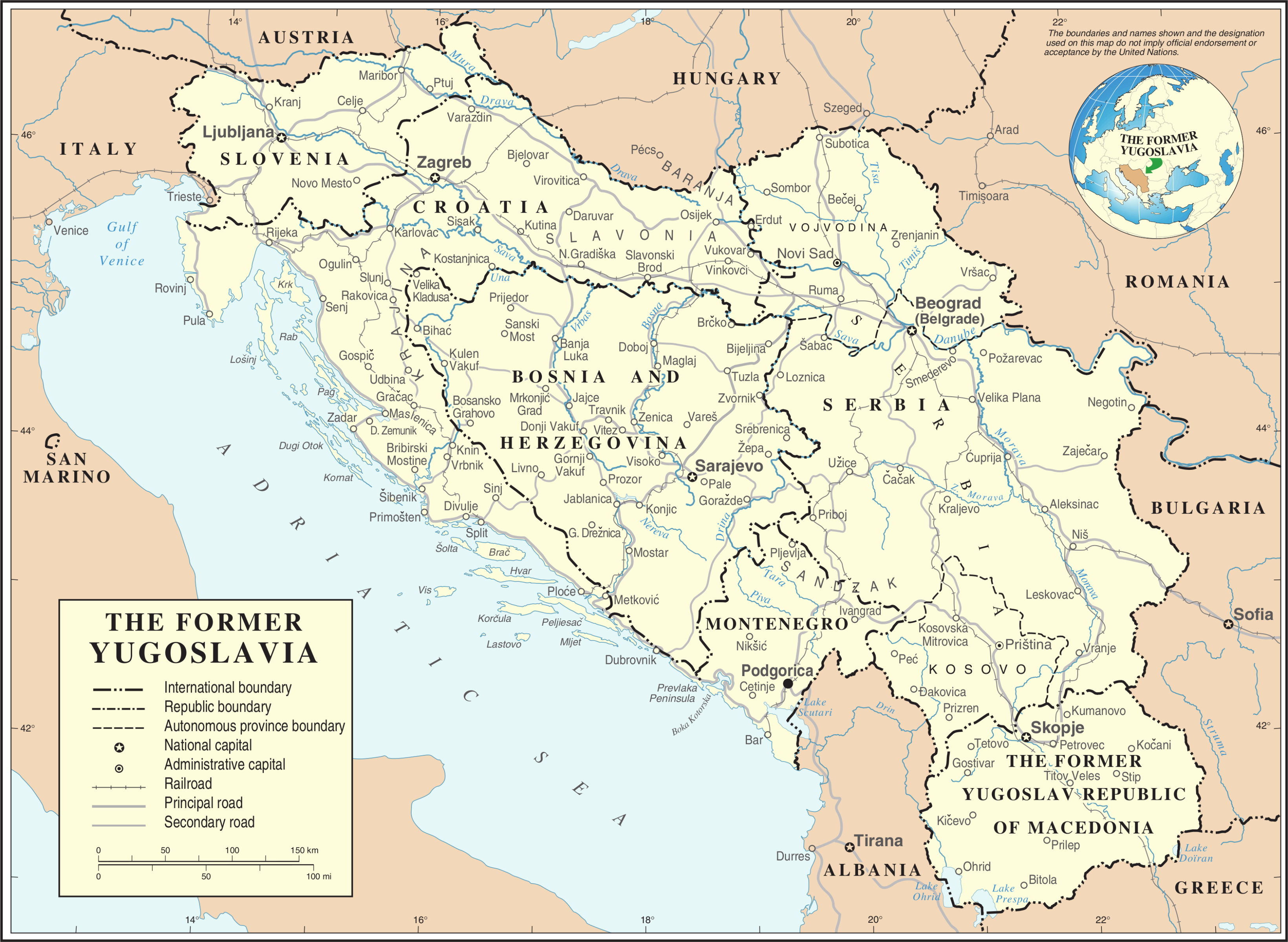
In all the constitutions of Yugoslavia, the Yugoslav People's Army was defined as the only legitimate armed force in the territory of the SFRY, and therefore, the only internationally recognized military entity. At the end of 1989, the SFRY Assembly passed amendments to the Constitution, thus replacing the one-party system with the multiparty system, which meant that besides the Alliance of Communists of Yugoslavia, other parties could now be formed.
At the end of January 1990, the Alliance of Communists of Yugoslavia collapsed, at the 14th SKY Congress in Belgrade, when sharp verbal clashes between Slovenian and Serbian delegates occurred regarding the future of the joint state of the SFRY.

Opposing sides - Kučan and Milosević
The Slovenian delegation left the session, immediately followed by the delegation of the FR Croatia, which brought the issue of the congress into question. After them, the delegations of the FR of Bosnia and Herzegovina and the FR of Macedonia also left the congress.
Thus, after 45 years, the rule of the communists in SFRY ended.
The situation in FR Croatia
On the multi-party elections held in FR Croatia on 22 April 1990, the HDZ party won with its political program clearly stating the desire for independence and separation of FR Croatia from SFRY.

Collaborators against the Serbs: Tudjman and Račan
The victory sparked great euphoria throughout the Federal Republic of Croatia and displays of images of Ustasha criminals (Ante Pavelić, Alojzije Stepinac, Vjekoslav Luburić, and others), while Ustasha greetings and Ustasha songs could be frequently heard. This brought back memories of Serbs in SR Croatia of persecution and genocide in the Independent State of Croatia (The Nazi project between 1941-1945).
As early as spring, the HDZ and Franjo Tudjman took control of the police, the media, the prosecution and the state administration. Serbs working in the police were forced to leave in the spring of 1990 immediately after taking over the power, when the conflict at Maksimir (Zagreb's football stadium) between fans of NK Dinamo (Croatia) and FC Red Star (Serbia), were misused for anti-Serb propaganda.
Thus began a media war against everything that had to do with Serbia and Yugoslavia. In summer, the authorities of the FR Croatia in Zagreb made the decision to form the armed forces themselves. In October and November 1990, a large amount of weapons were illegally imported into the Federal Republic of Croatia for the needs of the reserve police forces, members of the HDZ and the VOC. The action was led by Martin Špegelj and Josip Boljkovac, ministers in the then government of Croatia.
Illegal arming of Croats
The JNA Counterintelligence Service made a film about this endeavor at the JNA military training polygon in Gakov in October 1990 and released it on TV Belgrade on 27 January 1991. On 22 December 1990, a "Christmas Constitution" was solemnly proclaimed in the Parliament, by which the Serbs lost their decades-old constitution rights and Croatia removed the name "socialist" in its name.
Since May 1990, the situation in FR Croatia started worsening day by day and the Serbs were terribly scared for their personal security and their property. Ustasha graffiti, slogans, posters could be seen regularly, and a large number of Serbs received threats by phone that they had to move out of their homes and go to SR Serbia. They even received threatening letters bearing the "HDZ" signature.
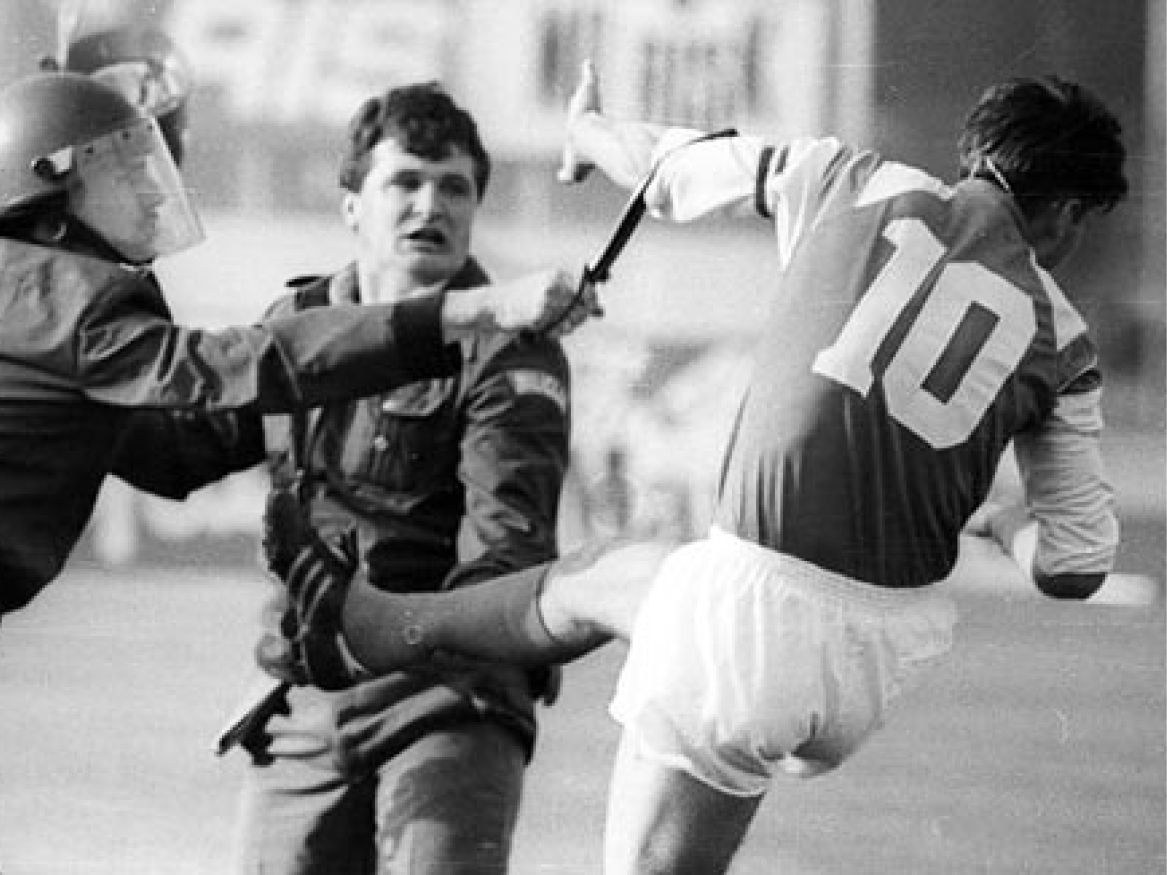
Violence in Zagreb at the Maksimir stadium
Even Croats who were married to Serbs received such threats.
Serbs in Croatia were fired from their jobs, and even their children were mentally and physically abused in schools. In almost all settlements where Croats had an absolute or relative majority, there were certain members of the HDZ party who had a task to keep an eye on the movement of their Serb neighbors (espionage).
The situation in Vukovar
Vukovar is the city located on the border between the western Srem and eastern Slavonija, where the river Vuka enters the Danube and where the harbor was built. The altitude here is 108 meters.
The first discovered civilization is traced back to the prehistoric period (neolith). This area was inhabited by Illyrs and Celts, and later by Romans who built stone-paved roads, dried swamps, and developed trade. In the sixth century, this area was inhabited by South Slavs who had to deal with a strong influence of Hungarians later in the 10th century due to the frequent wars and intention to control it.
In the 16th century, when Osmanli Turks reached this region, significant changes took place. Turks remained in the area of Vukovar for 15 decades. After the defeat of the Turks in Vienna, they were forced to retreat. Vukovar was released from Turkish authority in 1687 when the city had 3,000 residents. A large number of Serbs came to this place with the Great migration led by Serbian Patriarch Arsenije III Čarnojević in 1690, although a certain number of orthodox Serbs had lived in this place before this migration. By the middle of the 18th century, a large number of Germans and Hungarians moved to this region.
An Orthodox Church devoted to St. Nicholas was built in 1737, and Vukovar belonged to the area of Vojna Krajina (military border area) where the county of Srem had its headquarter, and which spread from the city of Zemun to the town of Vinkovci, that is, including the area between the rivers Sava and Danube. At one point, Vukovar and the region of Baranja were part of Srbska Vojvodina.

From 1840, Vukovar was involved in the permanent steamship trade on the Danube. In 1878, it got a railway track. The slow development of industry in Vukovar resulted in a small population of the town. On the eve of the Great War, 10,400 people lived in Vukovar.
When the Austrian Empire collapsed in 1918, and the Kingdom of SHS was created, Vukovar belonged to the Savska banate. It is this town where the Second Congress of the Communist Party of Yugoslavia took place in 1920. A Czech industrialist Jan Bata came to Vukovar in 1932, and in the place of Borovo founded the shoe factory and invested a lot of money in its development (buildings, schools, church, sports fields, etc.)

With the Germans and Italians attacking the Kingdom of Yugoslavia, together with their allies, Vukovar became part of the Ustasha’s Independent State of Croatia. At the place of Dudik, Croatian Ustasha murdered almost 5,000 people, mainly Serbs. During the Second World War, Croatian families from Herzegovina were moved to this region.
The front of Srem was broken in Vukovar in 1945 by partisan units of NOVJ, Red Army, and a unit from Bulgaria. After World War 2, Vukovar witnessed great industrial growth, and a lot of people from other parts of Yugoslavia moved here looking for jobs. By the middle of the 1980s, Vukovar was the second city after Ljubljana by gross domestic product in the entire Yugoslavia.
In 1989, SFRY changed its political system, allowing the multiparty elections on the local level and the republic, which were held in 1990. The elections were won by separatists led by Franjo Tudjman and the militant party of HDZ. On the other side, elections in Vukovar were won by the Communist Party with 65% of votes, and HDZ got only 26%. According to the 1991 census, Vukovar had 37% Croats, 32% Serbs, and 22% of Yugoslavs mainly of Serbian ethnicity. This is why the local government led by HDZ fell apart at the beginning of 1991 and was taken over by separatists.

In March 1991, in the village of Bogdanovci, Tomislav Merčep gathered more than 2,000 Croats living in the municipality of Vukovar and gave them guns. From that time, the situation in Vukovar became uneasy and intense. Vukovar was a hostage of a few local criminals who were members or supporters of HDZ.
Their leader was Tomislav Merčep, “Napoleon of Slavonija”, a very dangerous person with wicked plans. He got an order from the president of the party and Croatia, Franjo Tudjman to provoke the war in Vukovar. The local administration of HDZ made a list of several hundred Serbs who were supposed to be killed. Many Serbs from that list were kidnapped or killed.
WAR CRIMES
The first local in Vukovar was kafana “Krаjišnik” at Sajmište, opposite of the Drvopromet company owned by Bora Latinović.
On 1 May 1991, in the village of Bršadin with Serbs as its majority, a Croat and member of HDZ, Mihajlo Mijo Geleničar killed his neighbor, Serb Stevan Inić (1928) from the pistol. On the same day, Croatian policemen came to Borovo Selo to take off the Yugoslavian flag and replaced it with the Croatian flag. Local people captured them.
The next day, in the afternoon, 100 Croatian policemen came from Vinkovci to Borovo Selo with an order to shoot everyone they see. This is when a volunteer from Valjevo was killed, and a resident was severely wounded.
The defense of Borovo Selo was led by respected man Vukašin Šoškoćanin. 12 Croatian policemen died, and 30 were captured. In the afternoon, 30 tanks from Osijek, and XII Armored Mechanized Brigade of the JNA served as a peacekeeper in a buffer zone. Croatian policemen were released. This was a trigger for turning Croats from Vukovar against their Serbian neighbors.
On that same day, HDZ followers took over Radio Vukovar which then became “Croatian”. Serbian houses and locals were blown up. In the beginning, this was done at night and by “Merčep’s guys”, but later by members of Croatian Internal Affair as well, which means that this was all part of the official state policy of Croatia.
Following restaurants were blown up:
3rd May- Sarajka, and Tufo
6th May- Brdo
28th June- Mali Raj
2 July- Popaj
21 July- Točak
24 July- Čokot
30 July- Šid
Newsagents’ of Borba magazine from Belgrade were destroyed. Drivers who were transporting the press on Cyrillic from Serbia were beaten up, and their vans were confiscated.
Murders of prominent Serbs began: Mladen Mrkić, Jovan Jakovljević, Simo Ponjević, Ljuban Vučinić, Željko Paić, Vlado Skeledžija, etc.
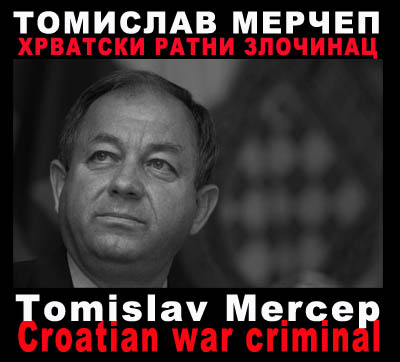
A representative of the Croatian government in Vukovar Marin Vidić aka Bili wrote letters to leaders of all Republics, and opposition leaders in Croatia about what was happening in Vukovar, and that Merčep and his followers were starting a war. Authorities in Croatia didn’t pay attention to these warnings, on the contrary. They knew everything was going according to the plan.
On 13th September 1991, Merčep retreated from Vukovar and went to Zagreb via “the corn road” while the war was already on. There he got new tasks and created a new police unit called “Jesenje kiše”.
The 29th August 1991 is considered a day when the war began. This is when the two members of JNA left their barrack in Vukovar- where the 12th JNA Pontoon battalion and recruits were placed- and came to the post office in Borovo Naselje to send letters. They were attacked by Croatian police patrol in front of the post office. They managed to defend themselves and return to their barrack.

General Blago Zadro and his soliders
On the next day, the barrack was besieged. Since the terror and harassment of citizens of Vukovar was unbearable and the barrack was blocked, this prompted the reaction of JNA general staff within its constitutional authorization.
Within their occupied areas of Vukovar, Croatian paramilitary members committed ethnic cleansing of Serbs, killing hundreds of them in their houses, and shelters. Victims were often falsely accused of “disclosing positions” or “possessing radio stations” and similar. Dаrinkа Dаrа Gruјić, Аnа Lukić, Drаgоljub and Мilicа Vrаčаrić, and the Pаvlоvić family were killed during this time.
Murders were committed by criminals whose names we should never forget- Zоrаn Šipоš, Мirа Dunаtоv, Nikоlа Ćibаrić, and many others.
LIBERATION OF THE CITY
In the following months, the Republic of Serbia sent JNA units to release soldiers from the barrack in Vukovar, and arrest terrorists.
Serbian paramilitary forces also participated in the process of liberation of Vukovar, but their exact number has been the subject of speculation for years. They were estimated between 600 and 800 in total. The JNA had a “go-stop” strategy of liberation, which resulted in the loss of motive among the soldiers.
Serbs that survived the occupation have given testimony of what was happening there, yet many of them refused to talk for two reasons. The first reason was their unwillingness to revive memories of the hell they had experienced, and the second was the fear of suffering the consequences for giving testimonies.
In the hospital in Vukovar, whose director was Dr. Vesna Bosanac, terrible things happened including organ removal from Serbian civilians for trafficking across Europe.
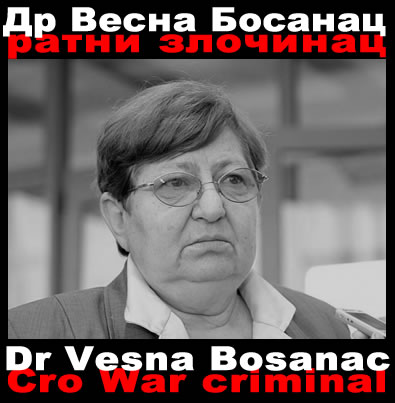
There were trucks that transported Serbian civilians to the Danube on which coast they were killed and, thus, sent to Serbia. However, during the shelling of the city, the transportation was not conducted, which saved the lives of many Serbs who were supposed to be on these trucks.
Final combats for the liberation of Vukovar started at the beginning of the Novembar 1991 and lasted for two weeks.
Combats ended in the evening of 18th November 1991, resulting in liberation which implied agreement on surrender of Croatian paramilitary forces.

CONSEQUENCES
After the war operations, some Croatian paramilitary members managed to escape through cornfields during the night, and thus, avoid arrest. However, JNA Military Police arrested the majority of ZNG and Croatian police members. A small group of falsely wounded prisoners (with fresh wounds on their legs) tried to escape the arrest by coming to the hospital, but members of Serbian Territory Defense have seen through their plan and taken them to the facility of the agricultural enterprise “Ovčara”. Less than 200 of them were killed on 20th November 1991.
One of those who were killed was journalist Siniša Glavašević who accused Franjo Tuđman and authorities in Zagreb through Radio Vukovar of betrayal of Croatian forces in Vukovar.
Croatian civilians were transported by bus to the town of Vinkovci because they didn’t want or dare to keep living with Serbs in Vukovar.
Expelled Serbs began to return to the city and work on its renovation.

The war could be avoided, but the independent Croatia with the number of Serbs as stated in the 1991 census was not acceptable.
The war served as a means for the expulsion of Serbs from Croatia, and all means were permitted and Croats were willing to do everything for that goal. President of Croatia, Franjo Tuđman, talked about this plan in May 1992 at the Bane Jelačić square in Zagreb.
YEARS LATER
As the largest city in the areas of Eastern Slavonija, Baranja, and Western Srem, Vukovar became part of the Republic Srpska Krajina, the state of Serbian people at the West, which lasted until it disappeared during the criminal operations “Storm” and “Flash” in 1995.
Thereafter, what remained of the republic was only its easter part around Vukovar and Beli Manastir named Sremsko-Baranjska region.
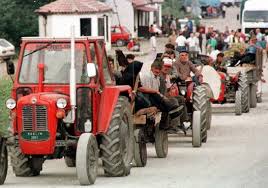
On 12 November 1995, the agreement was signed in Erdut, after which the remaining areas of the Republic of Srpska Krajina became part of the Republic of Croatia in 1998.
During the winter of 1996-1997, Vukovar witnessed a series of demonstrations against the establishment of Croatian authorities, but without any success. By the end of 1997, a lot of Serbs left the country and moved to Serbia, and abroad- Norway, England, Ireland, and Germany.
INDICTMENTS
Serbian families whose beloved were killed by Croatian paramilitary forces submitted an indictment against perpetrators before the Prosecutor's Office in Croatia.
Not a single verdict was issued to satisfy the families of victims. Most of them received rejection notice and had to pay for court costs.
Tomislav Merčep was tried before the Croatian courts, but not for the “case of Vukovar.”
PUBLICATIONS
A movie was made about the crimes against Serbs from Vukovar entitled “Vukovar- one story”. Directors were Bora and Maja Drašković, and actors- Мiriјаnа Јоkоvić, Bоris Isаkоvić, Svеtlаnа Bојkоvić, Prеdrаg Ејdus i Мihаilо Мišа Јаnkеtić, Мirа Bаnjаc, Dušicа Žеgаrаc, Оlivеrа Маrkоvić, Nеbојšа Glоgоvаc.
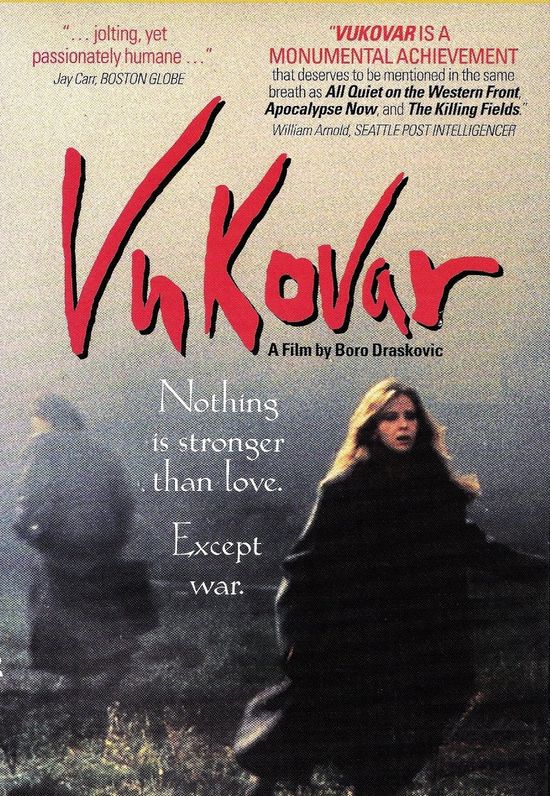
A documentary hasn’t been made so far.
Not a single book was written about the killing of Serbs from Vukovar. There are only a few articles and personal views of some publicists.
Tags:
|
|
|
|
|
|
|
|
|
|
|
|
|
|
|
|
CROATIAN DEMOCRATIC UNION
|
| |
Please, vote for this article:
Visited: 4324 point
Number of votes: 36
|